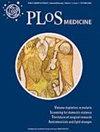Vaccine equity: A fundamental imperative in the fight against COVID-19.
IF 9.9
1区 医学
Q1 MEDICINE, GENERAL & INTERNAL
引用次数: 13
Abstract
On March 11, 2020, WHO declared the outbreak of severe acute respiratory syndrome coronavirus 2 (SARS-CoV-2) a global pandemic. Now, almost 2 years on, COVID-19 continues to cause widespread morbidity, mortality, and disruption, both directly and indirectly, on a global scale. The speed at which multiple effective vaccines were developed is a remarkable achievement and testament to scientific advances and collaboration. However, numerous barriers to global vaccination efforts have left 47% of the world’s population unvaccinated or only partially vaccinated to date, with huge disparities between countries in the proportion of fully vaccinated individuals ranging from 0% to 95% [1]. Barriers such as vaccine hesitancy and anti-vaccine movements have hindered the progress of vaccination efforts, and have been perpetuated by fears over vaccine safety and the spread of misinformation and disinformation, despite the wealth of evidence supporting the benefits of vaccination. Adding to the evidence on vaccine safety, in this issue of PLOS Medicine, William Whiteley [2] and Steven Kerr [3] and respective colleagues have shown in large-scale observational studies that the OxfordAstraZeneca vaccine is associated with no more than a small elevated risk of intracranial venous thrombosis and cerebral venous sinus thrombosis, respectively. The risks of cerebral venous thromboses are far greater following COVID-19 infection [4], further underlining the demonstrated benefits of vaccination. Inequity of access to vaccines has posed a significant barrier to vaccination in lowand middle-income countries (LMICs), despite calls for action to achieve equitable distribution and production of COVID vaccines from WHO [5] and the UN Development Programme [6]. In addition to the health risks to unvaccinated individuals of contracting COVID-19, greater opportunities for infections and viral mutations [7] leave the world vulnerable to the emergence of new variants which threaten to evade our defences and undo progress made. Most recently, this has been seen in the emergence of the Omicron variant of concern. It is without doubt that vaccination rollout must be equitable and fair on a global scale. Despite tireless efforts by public health experts to extol the benefits of vaccine equity throughout the pandemic, global vaccination rates remain woefully unequal. As of February 1, 2022, approximately 183 COVID-19 vaccine doses had been administered per 100 people in high-income countries, compared to just 14 doses per 100 people in LMICs [8]. The COVID-19 Vaccines Global Access (COVAX) initiative was launched in April 2020 with the intention of addressing this imbalance through accelerated development, production and equitable distribution of vaccines. Yet, by December 30, 2021, only 7 African countries had achieved their target 40% vaccination rates [9], which leaves us with the question of how vaccine inequity can be tackled and what can be done to overcome barriers to vaccination. To begin untangling this complex issue, we must first consider what a country needs to successfully vaccinate its population. A reliable supply of vaccines is the first step. The COVID PLOS MEDICINE疫苗公平:抗击COVID-19的根本任务。
本文章由计算机程序翻译,如有差异,请以英文原文为准。
求助全文
约1分钟内获得全文
求助全文
来源期刊

PLoS Medicine
医学-医学:内科
CiteScore
21.60
自引率
0.60%
发文量
227
审稿时长
3 months
期刊介绍:
PLOS Medicine aims to be a leading platform for research and analysis on the global health challenges faced by humanity. The journal covers a wide range of topics, including biomedicine, the environment, society, and politics, that affect the well-being of individuals worldwide. It particularly highlights studies that contribute to clinical practice, health policy, or our understanding of disease mechanisms, with the ultimate goal of improving health outcomes in diverse settings.
Unwavering in its commitment to ethical standards, PLOS Medicine ensures integrity in medical publishing. This includes actively managing and transparently disclosing any conflicts of interest during the reporting, peer review, and publication processes. The journal promotes transparency by providing visibility into the review and publication procedures. It also encourages data sharing and the reuse of published work. Author rights are upheld, allowing them to retain copyright. Furthermore, PLOS Medicine strongly supports Open Access publishing, making research articles freely available to all without restrictions, facilitating widespread dissemination of knowledge. The journal does not endorse drug or medical device advertising and refrains from exclusive sales of reprints to avoid conflicts of interest.
 求助内容:
求助内容: 应助结果提醒方式:
应助结果提醒方式:


